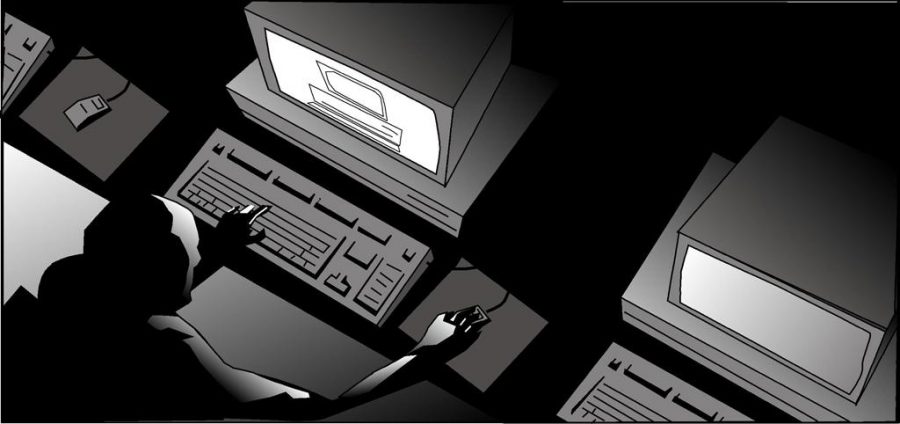To increase access to therapy, researchers suggest patients turn to their computers.
In a recent study, Pitt researchers found that computerized cognitive behavioral therapy was more effective for treating anxiety and depression than the usual treatment provided by primary care physicians, with benefits persisting for six months after the study.
“The truth is that most people receive their treatment for mood and anxiety in primary [care] settings,” said lead author Bruce Rollman, professor of medicine and director of Pitt’s Center for Behavioral Health and Smart Technology.
According to Rollman, primary care physicians typically treat mental illness rather than trained therapists because patients first show symptoms of depression — such as fatigue, insomnia and trouble concentrating — to their physician.
Rollman also said accessing qualified therapists can be difficult, especially in rural areas, for those without adequate transportation or when appointments require taking time off work. Going to therapy can also carry a social stigma.
The computerized CBT program in this study is called Beating the Blues. According to Stephen Doyle, senior director of strategic health management solutions at UPMC, Beating the Blues is intended to be an extension of treatment, used in concert with a health care provider.
Beating the Blues teaches participants to understand how events impact thoughts and feelings. Quizzes use hypothetical situations to test understanding, and worksheet fields help participants organize and shape their thoughts and feelings.
According to Doyle, a key facet of Beating the Blues is that it follows five real people with depression or anxiety on their own journeys through the program. Each person has a different situation that users may relate to, such as grief over the loss of a loved one, post-traumatic stress following a car accident or fear of failure at work.
Beating the Blues was originally developed in the U.K., Doyle said. UPMC — in collaboration with the British company Ultrasis — updated it for an American audience by editing the language and using American patients for the video vignettes sprinkled throughout the program.
A collaborating psychiatrist on the study, Pitt professor Jordan Karp, said treatment of mental health disorders by primary care physicians is not always as comprehensive as psychotherapy with a trained specialist.
“Primary care physicians may not provide, at times, more than a prescription, supportive listening and referral to see a mental health specialist,” Karp said.
Although computerized CBT solves these problems, randomized trials are necessary to demonstrate clinical benefits beyond what a primary care physician can provide, Rollman said.
According to Rollman, there is evidence several computerized CBT programs are as effective as in-person CBT at treating mood and anxiety disorders. Thousands of patients outside the US use computerized CBT, yet it remains largely unknown and seldom used within the US.
To evaluate the benefits of the U.S. version of Beating the Blues, Rollman and his team conducted a randomized clinical trial.
Rollman’s trial, funded by the National Institute of Mental Health, followed 704 UPMC physician-referred patients ages 18 to 75 who were diagnosed with anxiety or depression.
The control group received standard care with a primary care physician, Rollman said. One experimental group accessed Beating the Blues, completing five out of eight total sessions, on average, which Rollman credits to the human care manager coaches who held subjects accountable. The third experimental group did Beating the Blues and participated in an online support group that allowed them to connect with others enrolled in the study.
Compared to the control group, both groups assigned to Beating the Blues improved significantly on ratings of anxiety and depression over six months of treatment and the six months following, Rollman said. There was no significant added benefit of the internet support group.
“My takeaway from this is that you can’t just give people the link and expect people to use the product,” Rollman said. “It would be like me giving you a book on tennis, and if you don’t really engage with it you’re not going to improve your game.”
The researchers shared their findings at the Society of General Internal Medicine conference May 12.
Ed Michaels, director of the University Counseling Center, said there is no immediate plans to incorporate this technology into the center’s mental health offerings.
“We know what we do works,” Michaels said. “I’m not sure that [computerized CBT] would be additive or an adequate substitute for what we’re currently doing.”
Michaels stressed that in particular, the initial in-person evaluation is critical for making a diagnosis and pointing students in the direction of the resources they need.
“A hugely important thing that we do is on the front end,” Michaels said. “When a student calls us for help and we talk to them the first thing that we do is figure out what they need, which isn’t always apparent and obvious, and it isn’t always what they believe they need.”
After a diagnosis, Michaels said, therapists may consider steering students toward Beating the Blues.
Karp already refers some of his patients to Beating the Blues if he feels they would benefit from a self-paced and self-guided approach to controlling their mood and negative thoughts.
According to Doyle, in addition to treating depression and anxiety, Beating the Blues may also be helpful for teaching coping strategies to handle everyday stress.
“Subclinical daily stress is on the rise, and this is very much a tool you can use to change your outlook and reframe certain stresses in your life,” Doyle said. “CBT has been shown to be very effective at helping people to manage stress.”
Since 2011, anyone with UPMC insurance can access Beating the Blues at no cost through the online portal, Doyle said.
While Beating the Blues does increase access to computerized CBT, Doyle said, “The most glaring [limitation] is that it can’t replace a health care provider.”



